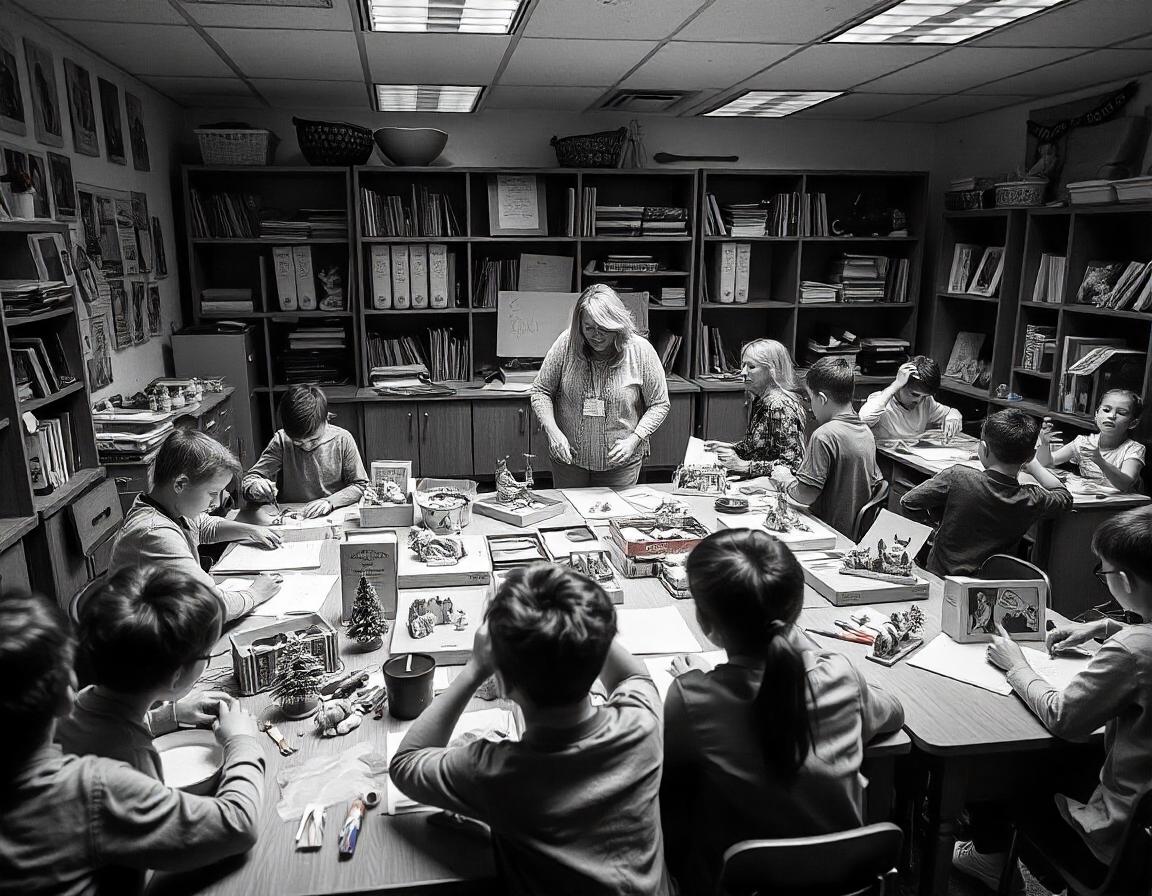In language education, combining literature with arts and crafts can greatly enhance the English learning experience. This approach not only deepens students' understanding of stories but also makes learning fun and engaging. By merging stories with hands-on projects, we create a dynamic learning environment that fosters both creativity and language skills.
Craft Activities: Bringing Stories to Life
Craft activities should resonate with the literature to inspire creativity. For example, young learners could make animal masks for a story about wildlife, design a diorama of a key scene, or create puppets to reenact parts of a story. These activities not only bring literature to life but also help students connect with the text on a deeper level.
For older students, crafts can be more sophisticated, like designing storyboards or creating artifacts from a historical novel. These projects deepen understanding of the text’s cultural or historical context. Crafting helps make abstract ideas tangible and engaging, making it a powerful educational tool.
Why Combine Literature and Crafts?
Integrating literature with crafts goes beyond adding a fun twist; it’s a valuable educational strategy. Hands-on activities cater to various learning styles, ensuring every student can participate. Creating something related to a story transforms reading from a passive to an active experience, encouraging exploration and personal connection to the text. This kind of active learning promotes critical thinking, deeper understanding, and helps vocabulary and concepts stick.
Engaging with Literature: Crafting Meaning
Here are some creative activities that enhance understanding of literature:
- Character Analysis: Students can draw or create collages of their favorite characters, highlighting traits and motivations. They might also write character diaries from the character’s perspective, helping to build vocabulary related to emotions and personalities.
- Plot Summaries: Visual timelines or storyboards help students map out the story's events. Adding quotes and symbols to the timeline reinforces their comprehension and understanding of structure.
- Discussion Prompts: Use crafts to spark discussions around themes and lessons. For instance, students could make symbols related to the story's themes and discuss their significance. Collaborative projects like group murals can encourage deeper thinking and meaningful conversations.
These activities are excellent opportunities to develop language skills. As students work on their crafts, they naturally expand their vocabulary, practice comprehension, and build speaking and listening skills through class presentations and discussions.
Making Language Learning Fun
Here’s how to weave language learning into crafts:
- Expand Vocabulary: Introduce new words related to the story. For historical novels, teach students terms from that era.
- Incorporate Language Exercises: Make crafting time an opportunity for language practice by asking students to write descriptions of their projects using new vocabulary.
- Boost Comprehension: Use crafts to check understanding by asking students to explain their choices and link them back to the text.
- Enhance Speaking and Listening: Host a “gallery walk” where students present their crafts, explaining their choices and answering questions. This builds confidence in speaking English.
Integrating Vocabulary and Language Practice
To get the most from these activities:
- Word Banks: Provide themed word banks to help students describe their crafts and broaden their vocabulary.
- Sentence Starters: Use prompts like “The character I chose is important because…” to encourage expression.
- Peer Feedback: Allow peer feedback sessions where students ask questions and provide suggestions in English. This encourages supportive communication.
- Reflection Journals: Have students keep journals to reflect on their crafting experience, discussing challenges, successes, and connections to the story. Encourage them to include new words, reinforcing vocabulary.
Bringing It All Together
Teaching English through literature and arts offers a unique way to make learning effective and enjoyable. By choosing activities that complement the text and incorporating language exercises into crafts, students build language skills while having fun. This approach leaves students with lasting memories and a deeper love for literature. So, let’s pick up those paints and dive into a world where stories and creativity come together.

